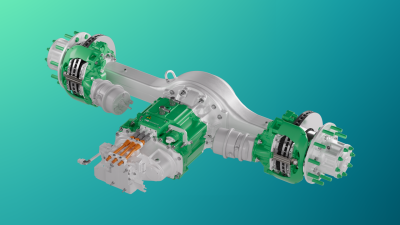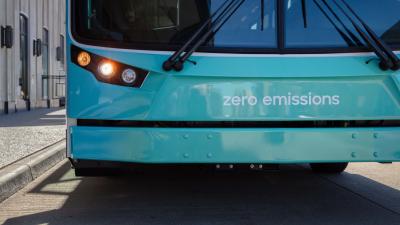How economies of scale will increase hydrogen technologies accessibility and adoption
Economies of scale is a term you often hear in the zero-emissions technology industry. It's all about how companies can save money because they produce more and how the savings are passed to the customer. This helps lower costs for making and buying products, making it possible for more people to use these technologies. This is the goal for most businesses but it's not always easy, especially with new technologies or industries that are just starting out.
In the simplest terms, economies of scale mean that when you make more of the same product, each piece should cost less. Every company has basic costs like rent, energy, and staff salaries. When you produce more, these costs get spread out, so each one becomes cheaper to make and sell. Plus, when we buy more from our suppliers, we can negotiate better prices, which helps us lower costs even more. This isn't just good for us – it's good for the whole industry.
In areas like zero-emissions power, making technologies less expensive means it’s more accessible for industries to use them, which makes the market more competitive. This also helps with things like total cost of ownership (TCO), making these technologies more attractive to everyone. By building economies of scale, we can make fuel cell technology and hydrogen fuel more accessible to everyone.
The benefits of economies of scale
Growing activity and investment in fuel cells and hydrogen power are expected to bring down their costs, making them more competitive with other energy sources.
- Cost reduction: Economies of scale typically lead to lower production costs per unit as the volume of production increases. This cost reduction can be passed on to various stages of the supply chain, including raw material suppliers, manufacturers, distributors, and retailers. Lower costs can translate to lower prices for consumers and increased demand.
- Efficiency improvements: With larger-scale production, companies often invest in technology, automation, and streamlined processes to increase efficiency. These improvements can lead to faster production cycles, reduced lead times, and smoother operations throughout the supply chain.
- Supplier relationships: Companies may negotiate more favorable terms with suppliers as they grow and order larger quantities of raw materials or components. This could include lower prices, priority resource access, or better payment terms. Stronger supplier relationships can enhance reliability and flexibility within the supply chain.
- Distribution and logistics: Economies of scale can enable companies to optimize their distribution networks. Larger volumes allow for more efficient transportation and warehousing strategies, potentially reducing transportation costs and minimizing inventory holding costs. This optimization can lead to faster delivery times and improved customer satisfaction.
- Risk mitigation: Larger companies with economies of scale may have more resources to invest in risk management strategies. This could involve diversifying sourcing locations, implementing backup production facilities, or investing in supply chain visibility technologies to monitor and mitigate disruptions.
- Innovation and product development: Economies of scale can free up resources for research and development, enabling companies to invest in innovation and new product development. This can drive further growth and differentiation within the market, impacting the supply chain by introducing new products or technologies.
For electrolyzer and fuel cell manufacturers, economies of scale will make the market stronger and better able to meet demand. In the world of zero-emissions power, higher demand will create more competition – encouraging businesses to invest more in innovation to stand out from competitors. It will also prompt infrastructure providers to create or expand hydrogen power hubs, as they’ll identify it as an area of growing profitability. Growing activity and investment in fuel cells and hydrogen power is expected to reduce costs, making them more competitive with other energy sources.
Economies of scale and fuel cell technologies
In the world of emerging technologies like fuel cells, achieving economies of scale is a big deal. Right now, using hydrogen technology is a bit too expensive for many industries. However, as more companies start using it, costs will decrease, making it more affordable for everyone. This will also attract investors who might not usually invest in clean energy, seeing it as a smart opportunity.
So, what would economies of scale do for the industry? Well, they'd help bring down vehicle costs and make hydrogen more accessible. But to make that happen, both electrolyzer and fuel cell manufacturers need to scale up their operations.
It's not just about the big players, though. When companies invest in these new technologies and grow their operations, it benefits everyone. Other companies can learn from them and improve their own products. Plus, competition in the market pushes us all to make better, more reliable products, which is great news for consumers.
What’s holding hydrogen and fuel cell power back
Currently, fuel cell and hydrogen fuel technology is supported by government subsidies, grants and private capital investment. Many see it as the future of sustainable power and are allocating significant resources to help it become broadly commercially viable. Its current high cost and limited infrastructure aren’t unusual if you take electric vehicles as an example.
When one company introduced the first competitive electric vehicles in the early 2010s, each vehicle had a six-figure price tag. Yet, with more investment and time, lithium-ion battery pack prices decreased by 89% between 2010 and 2020.
Infrastructure was also a challenge for electric vehicles at first. In 2012, just 50,000 public charging points existed globally, but the number in the US alone had risen to close to 145,000 by 2023. There are currently around 59 hydrogen charging stations in the US, with another 50 under construction. As demand rises, it’s likely these numbers will increase rapidly, but current infrastructure is making adoption a challenge.
Already, the price of fuel cells has halved since 2007 – but the price of hydrogen-powered vehicles is still higher than ICE cars and trucks. While that’s to be expected for an important industry in its relative infancy, zero-emissions power needs to become more financially sustainable as an industry. The goal is to leverage economies of scale so a viable total cost of ownership (TCO) ensures customers can choose hydrogen technology solutions.
Regulatory challenges
Governments worldwide are offering incentives to encourage businesses to transition away from ICE vehicles and embrace lower emissions alternatives. In the US, some regions are making a concerted effort to support fuel cell adoption. California’s Clean Vehicle Rebate Program, for example, offers a rebate to those who buy hybrid, plug-in electric or fuel cell vehicles. At the federal level, there’s also the option to claim a tax credit for new electric vehicles, including those powered by fuel cells.
Even so, there’s a lot of work to be done. The average California hydrogen power station can fuel around 30 cars per day, meaning they’re unlikely to be able to fuel more than one truck per day. For businesses with fleets, this makes hydrogen fuel cell adoption a challenge – particularly if they need to travel long distances away from depot fueling stations. Building a robust hydrogen fueling network is the most practical way to encourage companies to embrace new products.
Another significant obstacle is the lack of consistency around how hydrogen technology is regulated. Different global and local jurisdictions approach key aspects like classification and regulation differently, making it difficult for large-scale businesses to transition their entire fleet or operations. The price of hydrogen also varies significantly from station to station, so governments could implement fixed margins as they have done for gasoline to offer more predictable pricing.
Making hydrogen power widely viable
Arguably, the biggest challenge beyond infrastructure is the current cost of hydrogen. In 2022, the cost estimate to produce hydrogen on a large scale was between 2.50 and 6 USD. According to Hydrogen Council’s Hydrogen Insight 2023 report, the estimated levelized cost of producing renewable hydrogen (LCOH) with a proton exchange membrane (PEM) electrolyzer built today is about 4.5 to 6.5 USD per kilogram (USD/kg), increasing from 30% to 65% from the previous year.
The U.S. Department of Energy (DOE) “Hydrogen Shot” goal is to reduce the cost of hydrogen to $1/kg by 2031, excluding delivery and dispensing, for production using electrolyzers. To reach its target, more investment is needed in the industry.
The DOE has already kickstarted one focal point on its roadmap – the regional clean hydrogen hubs. With up to $8 billion in investment through the Bipartisan Infrastructure Law, seven H2hubs are poised to build a much stronger hydrogen infrastructure network across the U.S. and decarbonize multiple sectors of the economy. More recently, the DOE announced plans to allocate another $6 billion to funding across 33 projects spanning eight industrial segments to decarbonize hard-to-abate sectors.
The 45V clean hydrogen production tax credit is also a key player in unlocking further investments toward hydrogen availability. While still pending final publication, Accelera recognizes the tax credit’s importance in scaling the U.S. green hydrogen economy and is ready to support customers nationwide in deploying their hydrogen projects.
How Accelera is building hydrogen economies of scale
At Accelera, we have a deep understanding of the challenges and opportunities associated with bringing new technology to market. Backed by 100 years of industrial expertise through Cummins Inc., and with key partnerships across the hydrogen power sector, we’re forging a path that will bring fuel cell technology to more homes and businesses.
Accelera already has innovative products in the market, powering heavy-duty long-haul and medium-duty trucks, vocational trucks, and even passenger trains. Freight trains, marine vessels, and mining and construction equipment are also great options for fuel cell use, again creating economies of scale. Our line of fuel cell technologies has been engineered to work across these different applications to do just that.
Accelera has electrolyzers in operation around the world, enabling industrial manufacturing to produce green hydrogen and decarbonize production processes for steel, oil refining, ammonia and methanol. Our electrolyzers decentralize hydrogen power, helping businesses transition to zero-emissions power before regional and global hydrogen infrastructure is fully implemented.
As economies of scale come into play for hydrogen technologies, customers can create their own hubs across the globe to support operations on their own terms.
If you’re interested in finding out how our fuel cell and electrolyzer technology could decarbonize your business, get in touch.

